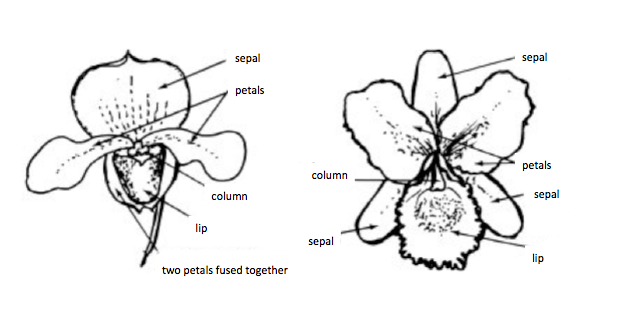+ Spanish
choosing the right orchid for you and your zone:
For your orchid to become a pleasure instead of a headache, the easiest way is to choose a genus that will enjoy the same environmental conditions as you, so you won’t need to go crazy making huge modifications to make your orchid happy. Check out the table we’ve prepared for you to know what types of orchid will thrive in your home; with this chart you can also start building your collection!!
You’ll see that some genus repeat in different levels. This is because some species within these genus are on the limit of each level and will be able to adapt to either one of them.
For the most sophisticated orchid lovers out there, you an alter the environmental conditions to provide the needs of the orchid genus you want, with simple homemade tricks or more complex systems investing in specialized equipment, or by growing in small greenhouses you can have n your house where you can control the environmental conditions completely.

fact: the genus is always written starting with a capital letter and the species, the second name without, for example: Dendrobium nobile
Orchids adapt quite easy, but don’t stretch the possibility too much!! It’s possible that a medium temperature can orchid thrive in a hotter weather zone adjusting the watering frequency, for example; same thing with it’s light needs. But if you try to grow a low light orchid in a sunny garden, it’s most likely that it won’t endure and die.
Before buying an orchid:
1. take a close look to the leaves (underneath as well): the leaves must be firm and have a vivid green color, a solid green, even if they have a pattern, they shouldn’t show any discolorations or spots. If they have brown, yellow or blackish spots, it’s a sick orchid.
2. The roots should feel firm as well. The color may vary from a silvery green to a tone of red, as well as the thickness. If the roots feel mushy, are black or grey, they are already rotten. They won’t always be visible, so move the media on the top with your fingers and take a pick.
3. When a new orchid arrives to your home, is really important to check the health of the roots. Take it out of it’s pot carefully and take a close look to the roots. Cut and cauterize with disinfected tools any rotten root, and preferably, change the media for a fresh own (previously soaked overnight).
4. Look also for the presence of insects or bugs; the plant may carry eggs, trails of slime, drops that look like honey, little spider looking webs, or fuss.
5 Buy plants that still have buds yet to open, that way you’ll know if the blooming period has just begun and this way you’ll enjoy blooms longer.
6. Always ask for the complete name of the species you’re buying; that way you’ll know the specific care your new orchid needs.
7. QUARANTINE: any new plant, not just orchids, should have a quarantine period apart from the rest of your plants. Observe it 2 or 3 weeks to make sure they have no pests, eggs, or diseases. This way, if there’s something, it will not spread to your entire collection.
TIP: just as you get home, and after checking the root system, spray all the plant, including the flowers and roots with our MULTI PURPOSE SPRAY. Look for the recipe here.
orchid parts:



